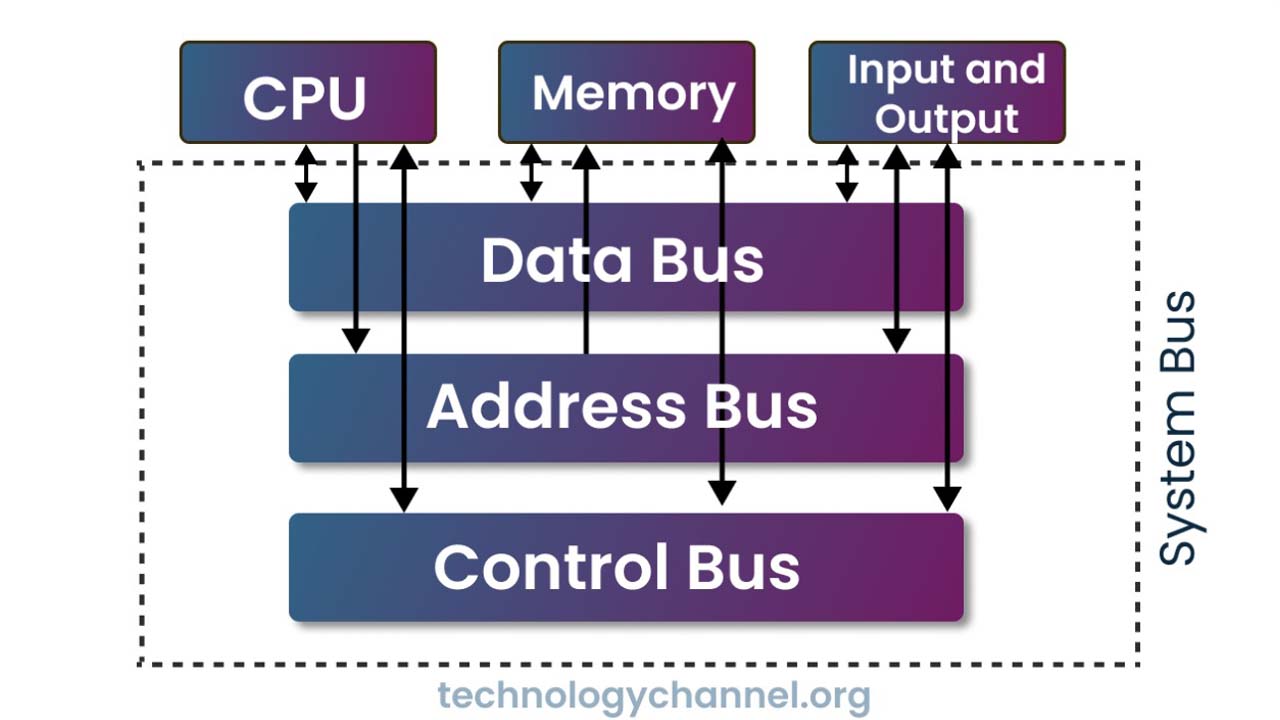Bus System
Bus Architecture
In Computer architecture, a bus is a collection of wires, chips and slots inside the computer through which data are transmitted from one part of the computer to another. It is often compared to a highway as data, control signal and memory address can be transferred through this.
The function of the Bus are:
- It carries information from one component to another.
- It carries data, address, or control signal.
- It supplies power to various peripherals connected to it.
- It provides a system clock signal to synchronize the peripherals attached to it with the rest of the system.

Types of Bus
1. Control Bus:
The Control bus carries the control signal. The control signal is used for controlling and coordinating of the various activites across the computer. It is uni-directional from CPU to all other components.
2. Address Bus:
The address bus carries memory address within the device. It allows the CPU to reference memory locations within the device. It also connects the CPU and other peripherals and carries only address.
3. Data Bus:
Data bus transfers data from one location to another across the computer. The number of wires in the bus affects the speed at which data can travel between hardware components. For example, a 16 Bit wide data bus can carry/transfer 16 bits i.e. 2bytes of data simultaneously between the CPU and the system components. The wider the data bus width, faster would be the data flow on the data bus.